Customer
Oil & Gas refinery (confidential)
Oil & Gas refinery (confidential)
The mission required the inspection of concrete pipes used to bring sea water in an Oil & Gas refinery and plant.
The aim was to deliver to the customer a detailed section by section report used to determine the internal status of the pipes and decide whether it was necessary to clean them with a high-pressure water system.
An underground de-sanding pool was the second target of interest for the mission.
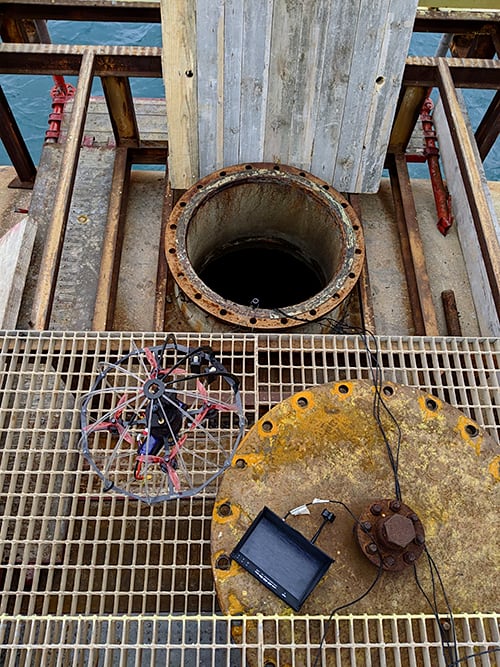
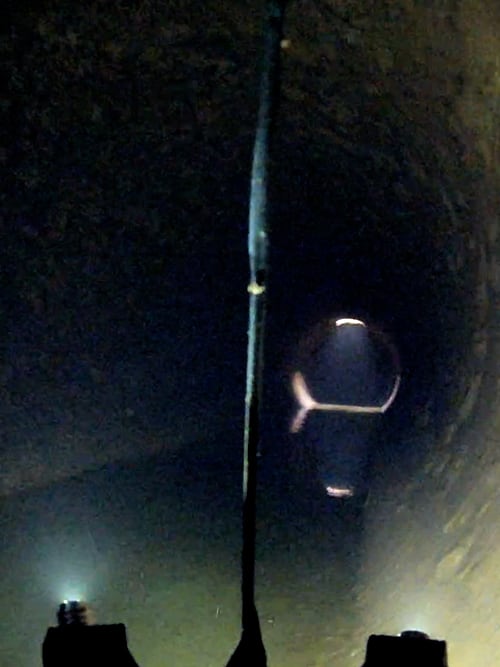
The asset to inspect was 2.2 meters wide concrete pipes for a total of more than 2 kilometers in length. Instead of using standard rovers or crawlers, the possible presence of residual sea water in the piping system required a different approach. The use of Skypersonic’s Skycopter, a caged indoor inspection drone with a powerful LED illumination system, allowed to fly over eventual puddles and collect the images needed by the customer to determine the internal status of the pipes and the de-sanding pool.
The mission was carefully planned to avoid any possible risk to the operators, since the inside of the pipes was an inaccessible confined space with potential presence of harmful gasses. Pre-planning involved the delivery of precise drawings by the customer and pre-inspection visits to the plant. Manholes at variable distances (70-120 meters) has been opened by the client to allow the entrance and retrieval of the drone.
Antenna extenders were dropped in the manholes to send the 2.4 GHz digital control signal to the drone and receive the 5.8 GHz real time analog video feed from it. Segments of pipes from 70 meters up to 120 meters long were safely inspected in a single flight. The use of Skyloc, the indoor linear measurement tool patented by Skypersonic, allowed inspectors to precisely mark the location of problem areas.
The customer received a detailed report about the status of the pipes, section by section. The presence of algae or mussels was outlined by close-ups captured with the drone HD camera.
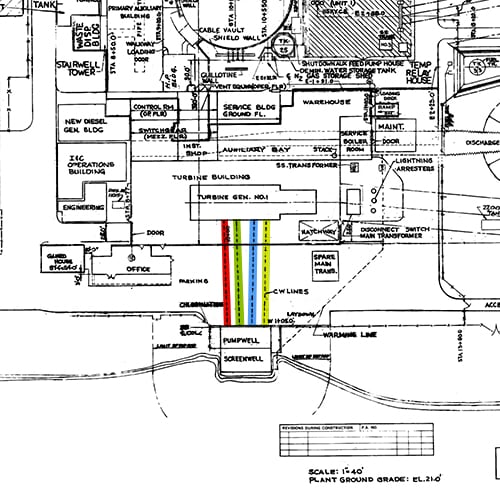
The mission was performed 100% indoors. A tethering system was used to drop the drone inside the pipe by the manhole before the arming procedure. In some cases, where two manholes were at a safe distance, a net was used by a second operator to recover the drone from the target manhole, limiting the need of flying it in two directions.
All flights were performed beyond visual line of sight. FPV goggles and monitors were used to fly the drone in the pipes.
No flammable fluids or radiation were expected.
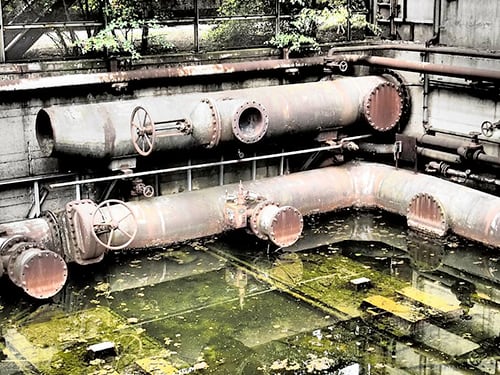
The visual inspection results provided enough detail to allow the customer to make a decision about which sections of the sea water intake systems needed cleaning and which did not.
The challenge of flying in an environment with the presence of sea water was mostly the risk to damage the electronic components of the assets used for the inspection. In some sections of the pipes a strong and turbulent wind was blowing, making the inspection more difficult. The Sport mode of the Skycopter allowed to confront the wind and complete the mission even in the windy sections.
The confidence level about the mission grew each day, as challenges were faced and solved. The plant was stopped during our inspections, making the timing a main concern for the customer. The complete inspection required 5 days.
In addition to the safety benefit of using drone technology instead of sending humans into these pipes for inspections, the Skycopter also dramatically reduced the amount of time that this task would have taken compared to other inspection tools. The resulting data captured by the Skycopter allowed the client to target which sections needed cleaning and which did not, providing significant overall cost savings for the project.

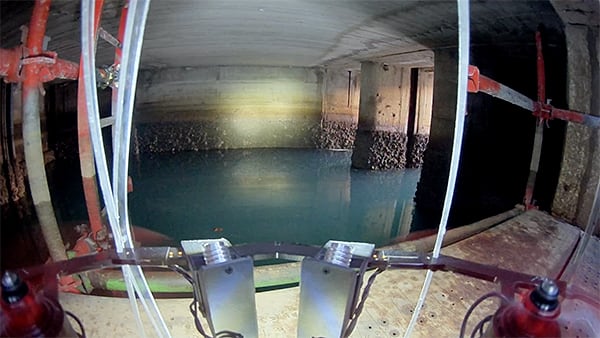
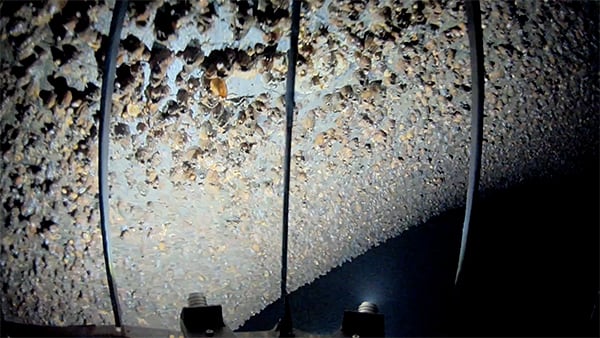
Contacts
Skypersonic Inc.
269 Executive Drive
Troy, MI 48083, Suite A
USA
E-mail: info@skypersonic.net
Tel: +1 (248) 850 7439
©2014-2022 Skypersonic™ – All rights reserved. Skypersonic™, Skycopter™ and Skyloc™ are trademarks of Skypersonic, Inc. – Terms & Conditions